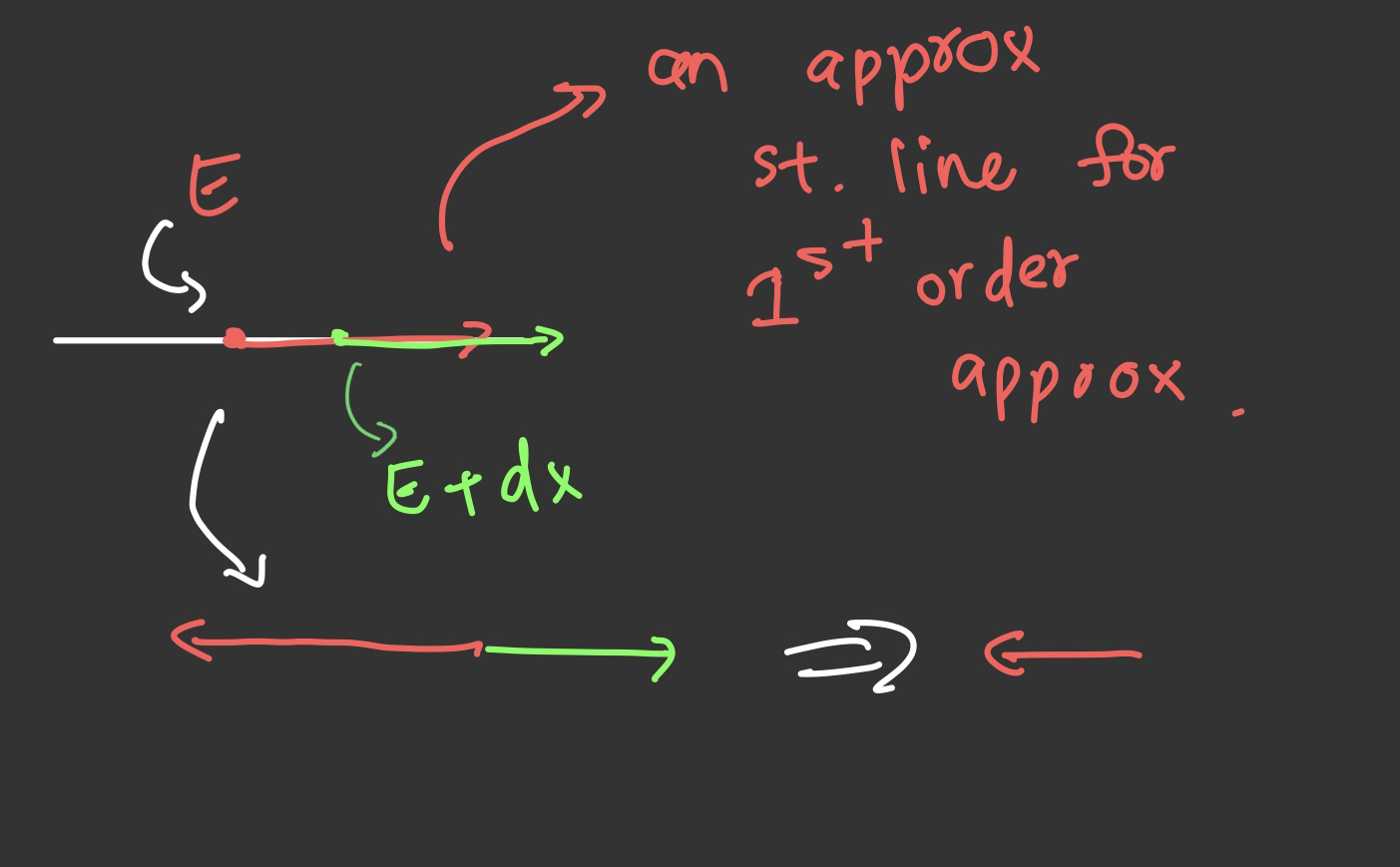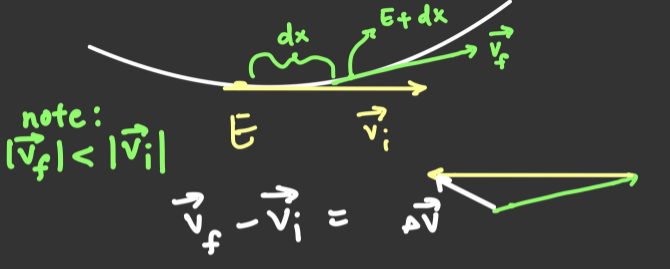A skier moves along a ski-jump ramp. The ramp is straight from point A to point C and curved from point C onward. The skier speeds up as she moves downhill from point A to point E, where her speed is maximum. She slows down after passing point E. Draw the direction of the acceleration vector at the point E.
The path traced by the skier is given below.
"At point E, the skier’s speed is instantaneously not changing; her speed is maximum at this point, so its derivative is zero. There is therefore no parallel component of $\vec{a}$ , and the acceleration is perpendicular to her motion." (*)
But intuitively, this doesn't make sense to me. Take a look at the instantaneous vectors that I drew in order to verify the direction of the acceleration vector.
At point E, the |velocity| is the maximum and given that the skier's speed decreases after point E, I drew vectors representing the direction of instantaneous velocity at the point E and the point E+dx. Here is a picture below.
It maybe observed that the acceleration is not completely in the normal direction.
Now we can say that, "It is a point of hill, so we can assume the tangent nearby to be the first order approximation and then take $\lim_{\Delta t \to 0} \frac{\Delta{\vec{v}}}{\Delta t}$ and say we found the acceleration vector. But the problem with that thing is, as we assumed a tangent line to be the approximation around that extremum E, the $\vec{v}_{E+dx}-\vec{v}_{E}$
would be a vector which is in the backward direction. For reference,  , which indicate that the acceleration is in the "backward direction".
, which indicate that the acceleration is in the "backward direction".
These ideas contradict to what the answer is given by the author. How do I rationalize these and come to a fine conclusion?





